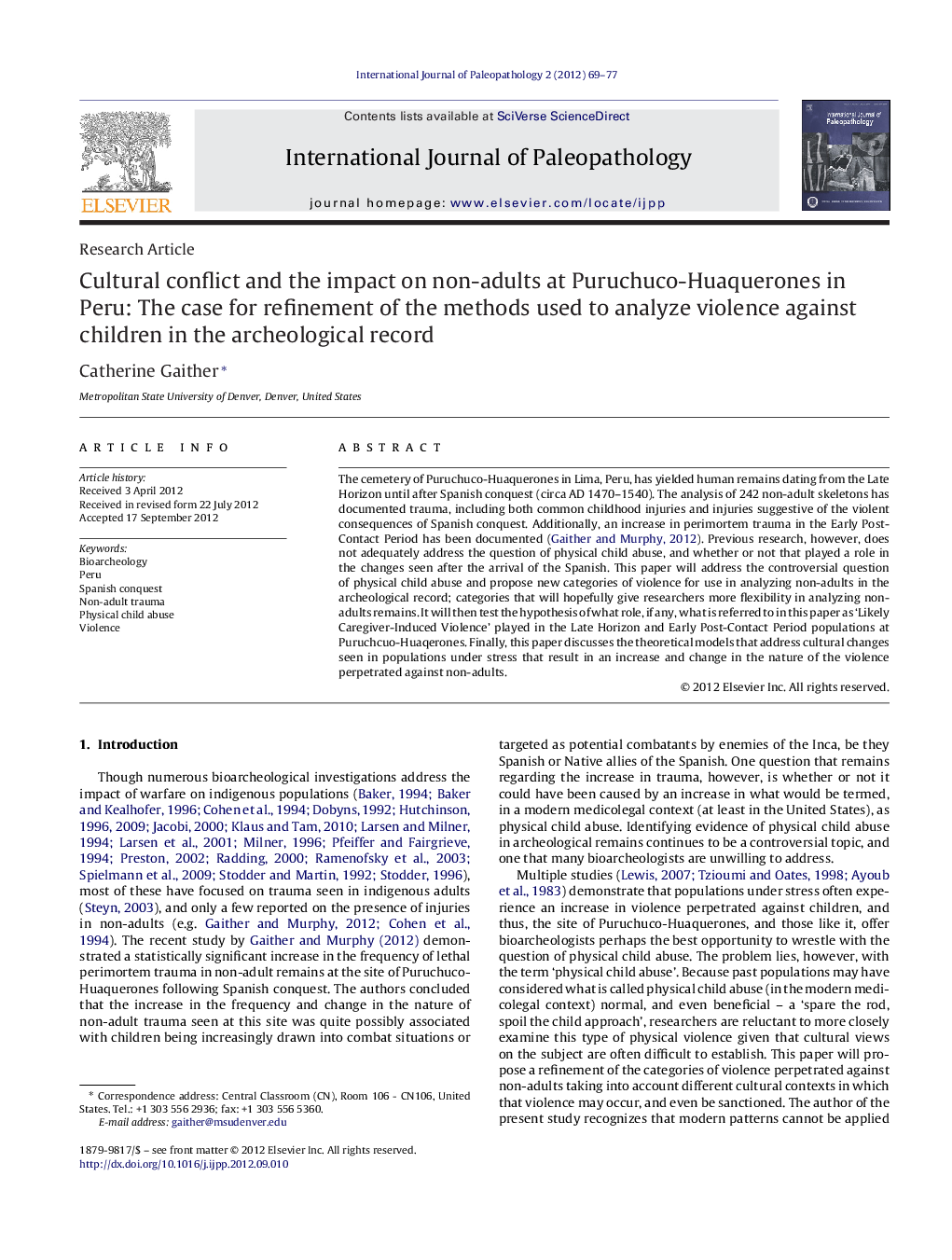| Article ID | Journal | Published Year | Pages | File Type |
|---|---|---|---|---|
| 101423 | International Journal of Paleopathology | 2012 | 9 Pages |
The cemetery of Puruchuco-Huaquerones in Lima, Peru, has yielded human remains dating from the Late Horizon until after Spanish conquest (circa AD 1470–1540). The analysis of 242 non-adult skeletons has documented trauma, including both common childhood injuries and injuries suggestive of the violent consequences of Spanish conquest. Additionally, an increase in perimortem trauma in the Early Post-Contact Period has been documented (Gaither and Murphy, 2012). Previous research, however, does not adequately address the question of physical child abuse, and whether or not that played a role in the changes seen after the arrival of the Spanish. This paper will address the controversial question of physical child abuse and propose new categories of violence for use in analyzing non-adults in the archeological record; categories that will hopefully give researchers more flexibility in analyzing non-adults remains. It will then test the hypothesis of what role, if any, what is referred to in this paper as ‘Likely Caregiver-Induced Violence’ played in the Late Horizon and Early Post-Contact Period populations at Puruchcuo-Huaqerones. Finally, this paper discusses the theoretical models that address cultural changes seen in populations under stress that result in an increase and change in the nature of the violence perpetrated against non-adults.
► Two distinct cemetery areas are examined, one including post-contact material. ► I analyze caregiver-induced violence in the remains from both cemetery areas. ► Evidence of such violence was found, but was not responsible for an increase in trauma. ► I discuss the results and theoretical models regarding violence against children.
